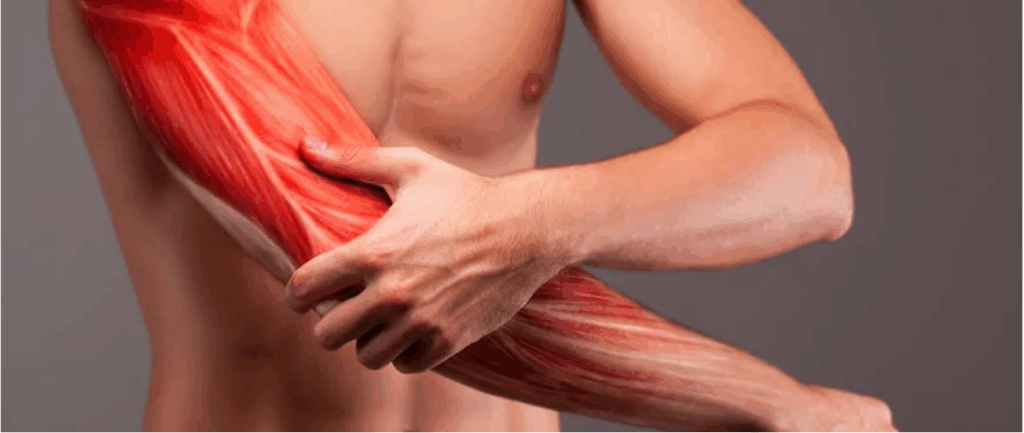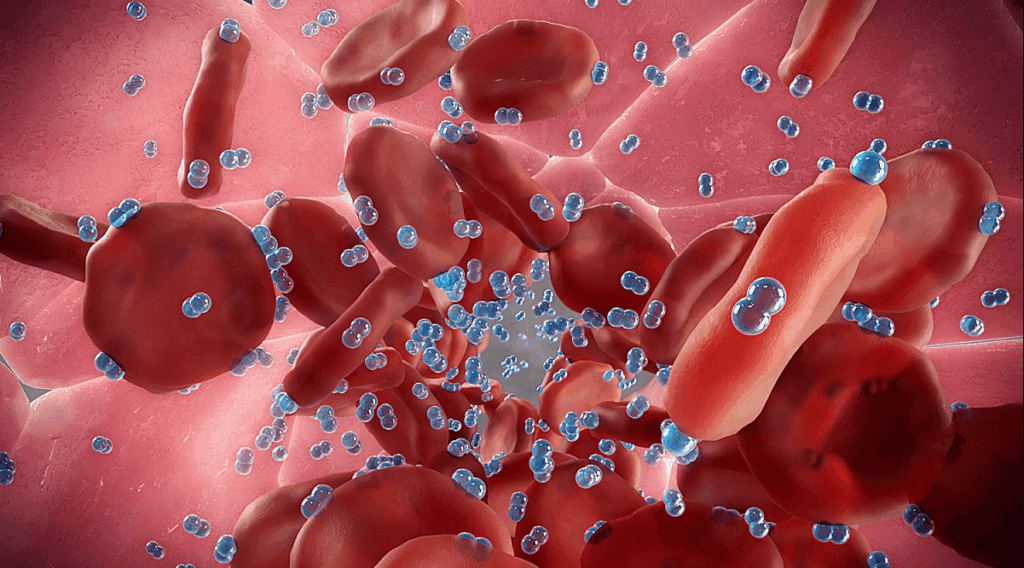You’ve probably heard sports massage helps with sore muscles, but that’s just scratching the surface. Whether you’re a weekend warrior or competitive athlete, these hands-on techniques do more than you’d expect for your performance. From rewiring your nervous system to releasing hidden flexibility, the benefits go deeper than basic recovery.
Here’s what actually happens when skilled hands work on your muscles, and why top athletes won’t skip their sessions.
1. Reduces Muscle Soreness and Speeds Recovery
After pushing through an intense workout, you’re likely familiar with that deep muscle ache that sets in a day or two later. This delayed onset muscle soreness (DOMS) can derail your training schedule and limit performance. Sports massage reduces muscle soreness by increasing blood flow to damaged tissues and flushing out metabolic waste products that accumulate during exercise.
The targeted pressure and manipulation techniques accelerate post-exercise recovery by breaking up adhesions and reducing inflammation. You’ll experience significant muscle tension relief as your therapist works through tight spots and trigger points.
This proactive approach to recovery is an essential injury prevention strategy that keeps you training consistently. By addressing soreness early, you’re setting yourself up for better performance in your next session.

2. Enhances Flexibility and Range of Motion
Your ability to move freely through a full range of motion directly impacts how well you perform. Sports massage targets tight muscle fibers through deep tissue manipulation, releasing restrictions that limit your movement patterns. When you’re dealing with adhesions and knots, your muscles can’t contract and lengthen properly, compromising muscle performance.
Through myofascial release techniques, your massage therapist breaks down fascial restrictions that bind muscles together. You’ll notice immediate flexibility enhancement as these tissues regain their natural elasticity. This improved range of motion translates directly to better athletic output, whether you’re reaching for a tennis serve, extending your stride while running, or achieving deeper positions in weightlifting.
3. Improves Circulation and Oxygen Delivery
While flexibility opens the door to better movement, your muscles need proper fuel delivery to perform at their peak. Sports massage dramatically improves circulation by dilating blood vessels and enhancing oxygen flow to working muscles. When you’re pushing hard during training, muscular fatigue sets in as metabolic waste accumulates. That’s where massage therapy for athletes becomes invaluable. It flushes out lactic acid and other byproducts while delivering fresh nutrients.

The circulation improvement from regular sessions means you’ll experience faster athletic recovery between workouts. Your therapist’s techniques stimulate capillary dilation, allowing more oxygen-rich blood to reach muscle tissues. This enhanced delivery system doesn’t just speed healing; it actively boosts your performance capacity during exercise.
4. Helps Prevent Injuries
Beyond improving how oxygen flows through your body, sports massage serves as a powerful shield against injuries that could sideline your training. Regular sessions help identify muscle imbalances before they become problematic. Your therapist uses physical therapy techniques to address weak spots and restore proper muscle balance throughout your body.
You’ll notice how pre-event massage prepares vulnerable areas, reducing strain during intense activity. By maintaining tissue flexibility and joint mobility, you’re less likely to experience strains, tears, or overuse injuries. The mental relaxation component also plays an essential role. When you’re mentally calm, you move more efficiently and avoid compensatory patterns that lead to injury.
While sports massage can’t prevent delayed onset muscle soreness (DOMS) entirely, it greatly reduces injury risk by keeping your muscles supple and responsive.
5. Breaks Down Scar Tissue and Improves Tissue Quality
When scar tissue forms in your muscles from past injuries or repetitive stress, it creates rigid bands that limit your movement and cause chronic pain. Sports massage breaks down these adhesions through targeted techniques like trigger point therapy, restoring your tissue’s natural elasticity.
You’ll notice improved muscle quality as deep tissue work realigns collagen fibers and releases fascial restrictions. This tissue repair acceleration prevents future delayed onset muscle soreness (DOMS) by maintaining healthy muscle architecture. Regular sessions keep your muscles supple and responsive, especially essential for post-event recovery when micro-tears need proper healing.
6. Supports Mental Clarity and Reduces Anxiety
Athletes often underestimate how physical tension directly impacts their mental game, but sports massage creates profound psychological benefits that enhance competitive performance.
When you’re carrying muscle tension, your nervous system stays in a heightened state of alert, draining mental energy and increasing anxiety levels. Sports massage activates your parasympathetic nervous system, triggering a relaxation response that clears mental fog and sharpens focus.
You’ll notice improved concentration during training and competitions as massage reduces cortisol levels and releases endorphins. This biochemical shift helps you manage pre-competition nerves more effectively. Regular sessions also teach your body to recognize and release stress patterns, giving you better emotional regulation under pressure.
Many athletes report feeling mentally refreshed and more confident after a massage, with clearer decision-making abilities during vital moments.

7. Improves Sleep and Recovery Cycles
The mental benefits of sports massage extend directly into your nighttime recovery, where the real magic of athletic adaptation happens. When you receive regular sports massage, you’ll experience deeper, more restorative sleep cycles. Massage therapy reduces cortisol levels while boosting serotonin and dopamine production.
During deep sleep, your body releases growth hormone, essential for muscle repair and strength gains. Better sleep quality means you’ll wake up with lower inflammation markers and improved energy levels. Studies show athletes who incorporate massage into their routine report 30% better sleep quality than those who don’t. You’re not just getting a rubdown; you’re optimizing your body’s natural recovery systems for peak performance tomorrow.
8. Boosts Pre-Event Readiness and Focus
While most competitors focus on physical warm-ups before events, strategic pre-competition massage can sharpen your mental edge and prime your nervous system for peak performance.
Pre-event sports massage uses lighter, stimulating techniques that activate your muscles without causing fatigue. These quick, rhythmic movements increase circulation and enhance neuromuscular response time, helping you react faster during competition.
You’ll notice improved body awareness and coordination as the massage heightens proprioception. The targeted pressure also triggers endorphin release, naturally reducing pre-competition jitters while maintaining ideal arousal levels.
Many athletes report feeling more connected to their bodies and mentally focused after a pre-event massage. Schedule your session 15-45 minutes before competing to maximize these performance-enhancing benefits without compromising muscle tension.
How Often Should Athletes Get Sports Massage?
How often you schedule sports massage depends entirely on your training intensity, competition schedule, and recovery needs. During heavy training blocks, you’ll benefit from weekly sessions to maintain muscle quality and prevent injury buildup. In lighter periods, biweekly or monthly massages work well for maintenance.
Professional athletes often receive massages 2-3 times weekly during peak season, while recreational athletes typically need sessions every 1-2 weeks. You should increase the frequency before major competitions. Consider scheduling massages 3-4 days pre-event for ideal readiness.
Listen to your body’s signals. If you’re experiencing persistent tightness, fatigue, or decreased performance, you probably need more frequent sessions. Conversely, if you’re recovering well between workouts, you can space sessions further apart. Work with your therapist to create a customized schedule that aligns with your specific goals.
Choosing the Right Sports Massage Therapist
Finding the right sports massage therapist can make or break your recovery and performance goals. Look for therapists with specific sports massage certifications from recognized institutions like NCTMB or AMTA. They should understand athletic biomechanics and sport-specific demands.
Ask about their experience with your sport and injury history. A qualified therapist will assess your movement patterns, discuss your training schedule, and customize treatment accordingly. They’ll explain their techniques and expected outcomes clearly.
During sessions, expect deep pressure work, stretching, and potentially some discomfort, but never sharp pain. Your therapist should communicate constantly, adjusting pressure based on your feedback. They’ll also provide post-massage care instructions and recommend session frequency based on your competition calendar and training intensity.
Frequently Asked Questions
Is Sports Massage Safe for Athletes With Chronic Conditions Like Diabetes?
You’re generally safe getting a sports massage with diabetes, but you’ll need your doctor’s clearance first. Tell your therapist about your condition, monitor blood sugar levels before and after sessions, and avoid massaging injection sites.
Can I Combine Sports Massage With Other Recovery Methods Like Ice Baths?
Yes, you can definitely combine sports massage with ice baths for enhanced recovery. Many athletes use both methods together – just space them out properly. Try massage first, then ice bath later, or alternate days for best results.
Should I Eat Before or After a Sports Massage Session?
Eat a light meal 2-3 hours before your massage. Avoid heavy foods that might cause discomfort when lying down. After your session, hydrate well and eat within an hour to support recovery.
Are There Age Restrictions for Young Athletes Receiving Sports Massage?
There aren’t strict age restrictions, but you’ll need parental consent if you’re under 18. Most therapists work with athletes as young as 12-14, using gentler techniques appropriate for developing bodies and growth plates.
Does Insurance Typically Cover Sports Massage Therapy for Athletes?
Most standard health insurance doesn’t cover sports massage. However, if you’re treating an injury and have a doctor’s referral, some plans might reimburse you. Check with your provider about specific coverage options.





